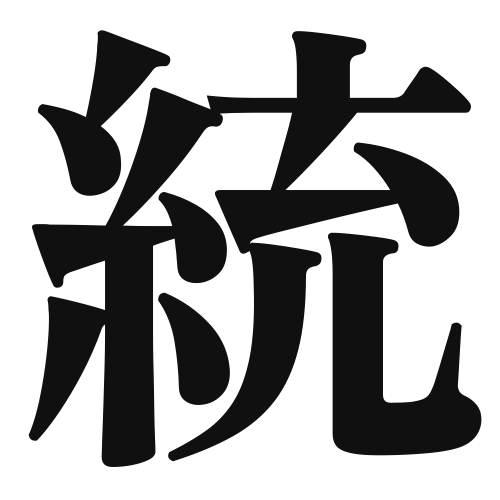1. Overview of Meaning
The kanji “統” (pronounced “tō” in Japanese) means “to unify” or “to govern.” It conveys the idea of bringing different elements together into a cohesive whole.
2. Formation and Radical
Formation of the Kanji: The kanji “統” is a compound character, which means it is formed by combining different elements. It is classified as a 会意文字 (ideogram), where the components represent the concept of unification.
Radical: The radical for “統” is “糸” (ito), which means “thread.” This suggests a connection or weaving together of different strands, symbolizing unity.
3. Examples of Usage
Common Words and Phrases: Some frequently used words that include “統” are:
- 統一 (tōitsu) – unification
- 統治 (tōchi) – governance
- 統計 (tōkei) – statistics
Example Sentences in Daily Conversation:
- 国を統一することは重要です。 (Kuni o tōitsu suru koto wa jūyō desu.) – It is important to unify the country.
- 彼は統治の方法を学んでいます。 (Kare wa tōchi no hōhō o manandeimasu.) – He is learning about methods of governance.
4. Synonyms and Antonyms
Similar Kanji: A similar kanji is “合” (gō), which means “to combine” or “to fit together.” While both kanji convey a sense of bringing things together, “統” emphasizes a more structured or authoritative unification.
Opposite Kanji: An antonym is “分” (bun), which means “to divide.” This kanji represents the act of separating or breaking apart, contrasting with the idea of unification.
5. Cultural and Historical Background
Relation to Japanese Culture: The concept of “統” is significant in Japanese culture, especially in the context of governance and social harmony. Historically, the unification of Japan under various leaders has been a pivotal theme.
Proverbs and Idioms: One relevant proverb is “一つに統一する” (hitotsu ni tōitsu suru), which means “to unify into one.” This reflects the cultural value placed on unity and cooperation in Japanese society.
